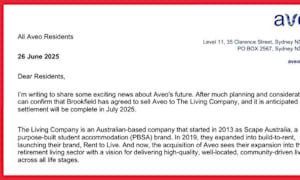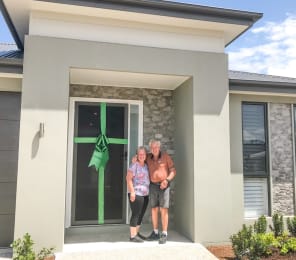With little retirement village news around this week we sat down and read the excellent Aveo sustainability report just released. (Download it HERE).
One of the items that caught our attention was the industry statistics - an old chestnut but worth another look.
From the image above, Aveo estimates that we have 184,000 residents in retirement villages and the average age is 81 – interestingly, the same average age as residents in nursing homes.
Aveo’s average resident age is 83. This is quite something across 14,000 residents. Does it tell us that living in a retirement village allows longer living?
It does verify Grant Thornton analysis that the few residents of retirement villages that transfer to aged care homes, do so on average five years later than people from the broader community – which must be a good thing.
Back to the analysis.
Below is another clip from the Aveo report.

This graph states that current penetration of retirement villages is 5.7% of the population aged 65+, which translates into 167,000 retirement village homes in 2017. If we maintain that penetration, by 2025 we will have 215,000 retirement village homes, requiring an average of 6,000 new homes to be built every year.
Unfortunately, this does not add up. Our figures indicate a maximum of 3,000 new retirement village homes are being built each year.
What does this mean?
Firstly, what hits the market this year was first planned four years ago - in 2015. It takes this time to find the land, get planning approval, funding approval etc and then 18 months to build.
2015 and 2016 were good times for the sector, with considerable optimism – and we’re seeing 3,000 units a year hitting now.
2017 and 2018 were negative perception years for retirement villages, flowing from the Four Corners report and the housing downturn.
Over the next two years we can’t expect more than 3,000 new units hitting the ground, meaning penetration at 5.7% will continue to be a dream.
However, we are seeing the first green buds of confidence. Every few weeks a new (private) retirement developer announces plans - and for big villages. People like Jeff McCloy, the Thirdi partnership (including Michael Eggington), and even NZ’s Summerset who has purchased their first Australian village development block.
Equally, the experienced village entrepreneurs are ramping up - interestingly nearly all Queenslanders, such as Michael and Justin Harrison, Scott and Walter Elliott, Tim Russell and Mark Taylor, Glen Brown,big Phil Usher and smaller Phil Usher, Mark Bindon and Franco De Pasquale – but also Derek McMillan, Sean Howard from Melbourne, Paul Browne and Paul Singer.
On the not-for-profit side, it’s the big, proven operators who are pushing forward hard, like Uniting in NSW, Catholic Healthcare, Villa Maria Catholic Homes and Anglicare Retirement Villages. These have $100-500M in retirement Village developments underway.
They have confidence and it is easy to see why. With 12% turnover each year we have just 20,000 village homes coming on to the market each 12 months.
1.2M Australians are aged 75 to 84, the real market for retirement villages; potential demand does exceed supply, and demand is increasing.
3,000 new homes at a construction cost of say $350,000, requires $1,050,000,000 in willing capital. To achieve 8,000 new homes a year (Aveo’s projection) will require $3.6B in willing capital every year.
Is that capital available? Or is it flowing to land lease communities. See next story.










